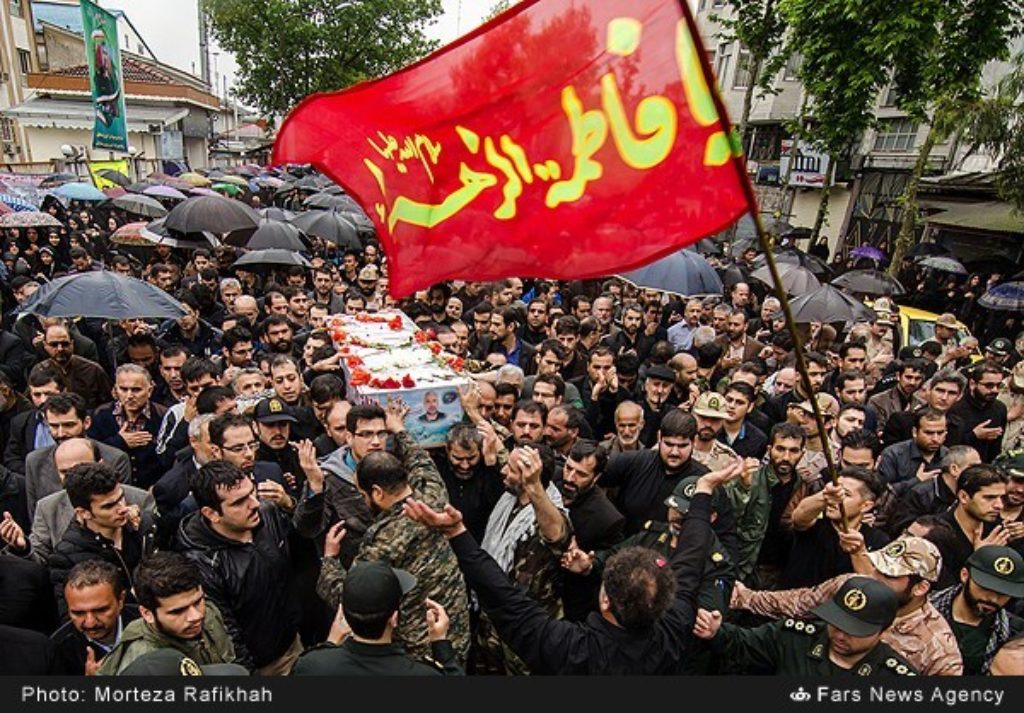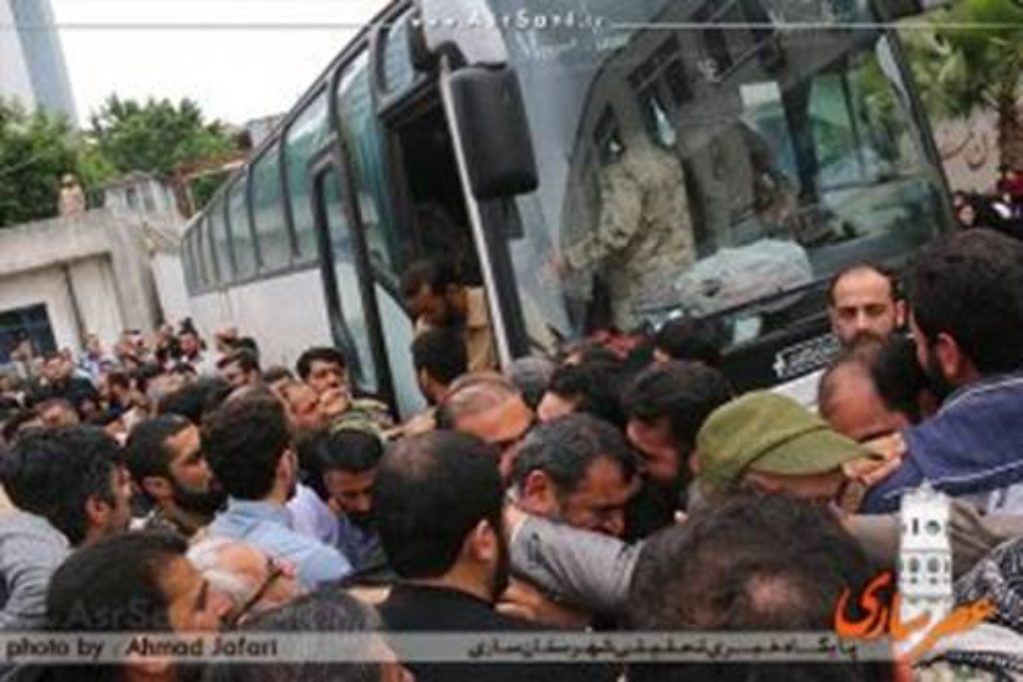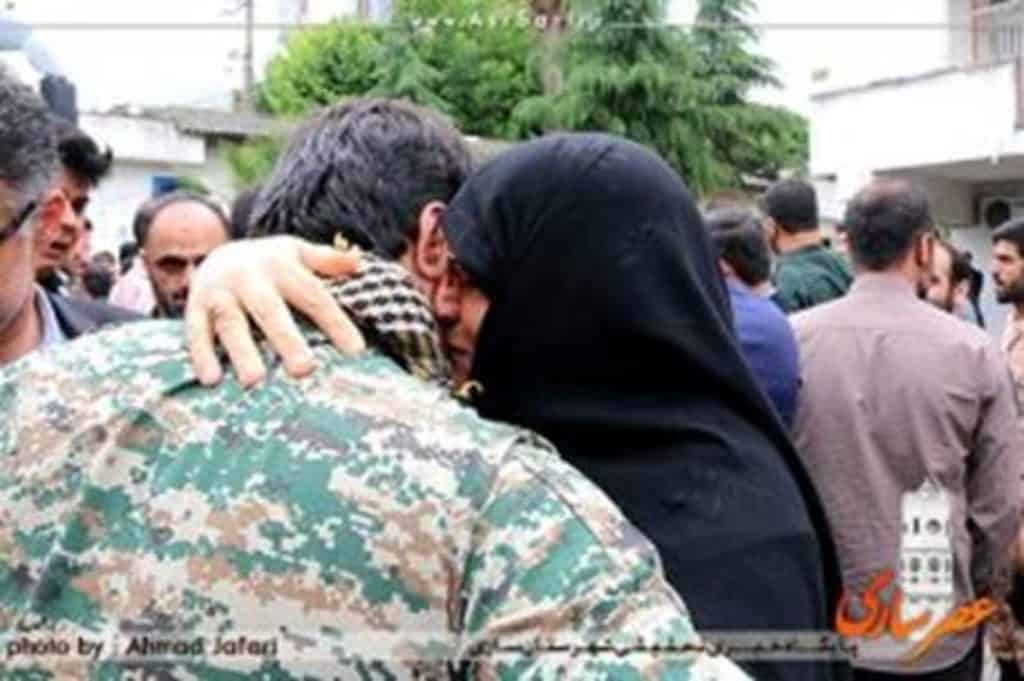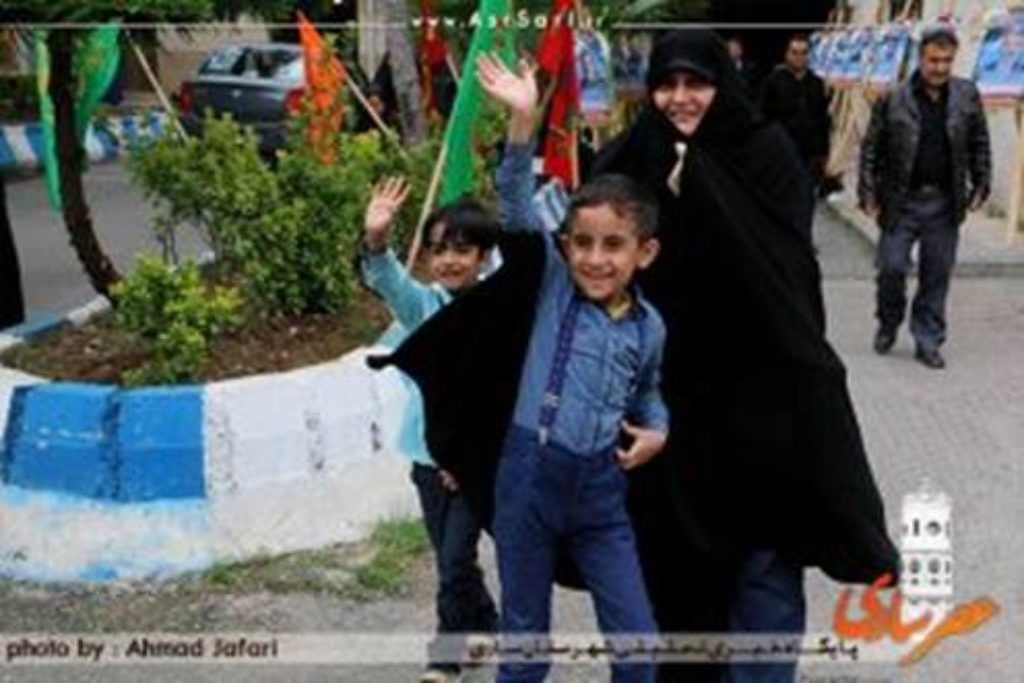On May 6, the Islamic Revolutionary Guard Corps (IRGC) lost the Syrian village of Khan Touman, strategically located near the Aleppo-Damascus highway southwest of Aleppo, to Jaysh al Fath, a jihadist-led alliance of rebel groups. Al Nusrah Front, al Qaeda’s Syria branch, and other jihadi groups publicized footage of the assault and its aftermath on social media, which included images of captives and dead bodies. This ambush has garnered significant public attention in Iran, with some observers describing the rout as the Guard’s worst loss in the Syrian war.
According to an unconfirmed report by Iranian outlet Jam News, 80 pro-government combatants were killed, including members of the Afghan Fatemiyoun Division, Lebanese Hezbollah, and the IRGC. Footage on social media shows a large number of Afghans and Iranians, and possibly some Hezbollah fighters, among the dead. An alleged text message exchange among trapped Afghans in Khan Touman has since gone viral, particularly for its ominous ending: “God willing we will be martyred, not captured.”
The Revolutionary Guard has thus far acknowledged the wounding of 21 and the loss of 17 military “advisers,” including the deaths of two senior officers: Brigadier General Second Class Javad Dourbin, a retired commander who went to Syria last month, and Brigadier General Shafi Shafii, who was a commander in the Quds Corps (not to be confused with the Quds Force) stationed in Gilan. Thirteen were regular ground forces from the 25th Karbala Division, stationed in the northern Iranian province of Mazandaran. Bearing the brunt of the ambush, this unit has rotated back to Iran. One soldier was from the IRGC Hazrat-e Seyyed ol-Shohada Unit (Tehran province) and another from Karaj, Alborz province.
According to parliamentarian Mohammad Esmail Kowsari, a former senior Guard commander, five or six Iranians were captured in Khan Touman. According to a journalist with the IRGC-affiliated Fars News, Jaysh al Fath executed three Iranian prisoners and took five to an undisclosed location on May 10, raising the purported number of prisoners to eight.
Videos and photos taken of two of the captives claimed that they were Iranians or Hezbollah fighters, though Hezbollah has denied that any of its members were captured in the ambush. The two appeared to be native Syrian Arabic speakers (Jund al-Aqsa, an al Qaeda front group, claimed the execution of one of them yesterday). Other footage of prisoners shows two Afghan Fatemiyoun Division members.
Although Qods Force Commander Qassem Soleimani missed a scheduled briefing of Iranian parliamentary-elects on May 8, with sources citing “travel,” he was in Iran on May 11 to attend the funeral of his former commander. Rear Admiral Second Class Mohammad Nazeri, commander of the IRGC Navy Eba Abdollah Commando Unit, was Soleimani’s trainer in 1979 (and was also present during the arrests of the British and US navy sailors in 2007 and 2016). The IRGC officially announced at first that Nazeri was “martyred” on Guard Day during a mission in the Persian Gulf; subsequent public statements and biographies indicate that he succumbed to chemical complications sustained after being gassed in the Iran-Iraq War.
Nonetheless, Iranian officials and commanders have attempted to downplay the loss of Khan Touman. Ali Akbar Velayati, the supreme leader’s top foreign policy advisor, boasted that the pro-regime coalition in Syria is “stronger” than ever.
Velayati met with Syrian President Bashar al Assad in Damascus on May 7 to reassure him of the Islamic Republic’s commitment to his government. Velayati then reiterated to the media that Assad remaining in power is Tehran’s “red line.” The IRGC Karbala unit issued an official statement on May 7 praising “martyrs” and urging people to remain calm and to ignore “the psychological warfare of the takfiris [Muslims who accuse other Muslims of being apostates] on social media.” The commander and spokesman of the unit echoed this view in subsequent press statements. IRGC Deputy Commander Brigadier General Hossein Salami, said on May 10 that the fall of Khan Touman was not a strategic setback and that the “Axis of Resistance” is in control of the war.
Senior Iranian officials and commanders have indicated that forces would retaliate for Jaysh al Fath’s ambush. Ali Shamkhani, secretary of the Supreme National Security Council, told a reporter on May 9 that “Iran and its allies – meaning Russia, Syria, and Hezbollah” consider the assault “a major pre-planned violation” of the ceasefire that would not be left unanswered. Mohsen Rezaei, former IRGC commander and current member of the Expediency Discernment Council, warned of “harsh revenge” in an Instagram post the same day. Salami similarly vowed on May 10 that recently lost areas would be retaken. The spokesman of the 25th Karbala Division announced on the same day that the remains of 12 Iranians killed in Khan Touman would be retrieved after “the liberation of areas.”
State and IRGC-affiliated media outlets have also been claiming that preparations are underway for a “large-scale” counterattack with the participation of the Syrian military, Hezbollah, Iraqi militias, and Iranian forces to retake Khan Touman. These reports aim to highlight the central role of the Syrian army assisted by Iranian “advisers.” They also provide unverifiable figures of large numbers, perhaps in the hundreds, of opposition deaths. Kayhan, the supreme leader’s unofficial mouthpiece, ran the headline “the resistance took revenge, 500 terrorists killed in Khan Touman” on May 11. An op-ed in the newspaper boasted, “no military has the Islamic Republic’s capability” to “confront takfiri terrorism.”
Iranian officials and IRGC-affiliated outlets have been projecting a narrative that forces backed by the United States, Israel, Saudi Arabia, and Turkey violated an extended ceasefire to launch the ambush, though they did not mention that Nusrah was excluded from the truce. Shamkhani told parliamentary-elects on May 8 that “Americans and their regional and terrorist allies,” including Nusrah, took advantage of the “goodwill” of the ceasefire.
Rezaei has similarly censured the “terrorists” who “took advantage of the ceasefire,” accusing Israel, Turkey, and Saudi Arabia of supporting these groups. In a condolences letter, Judiciary chief Ayatollah Sadegh Amoli Larijani blasted “the devilish deception of takfiris and their dishonorable attack” and proclaimed the ambush will strengthen the “iron will” of the defenders “pure Muhammadean Islam” to drive back the “army of blasphemy, polytheism and Satan.”
On May 8, the IRGC-affiliated media agency Tasnim underscored the same two themes of truce-breaking and foreign support. An op-ed in Fars News published the next day proclaimed that the ambush showed “there can be no hope to a political solution in Syria.” Kayhan’s lengthy op-ed published today questions the merits of the ceasefire, proclaiming that assaults on Al Ais last month and Khan Touman this past week are proof that “terrorists groups and the governments that back them” including the U.S., Israel, Saudi Arabia, Qatar, and Turkey were never committed to the ceasefire.
Iranian officials have not publicly criticized Russia, but the media has objected to perceived Russian inaction. Deputy Foreign Minister Hossein Amir Abdollahian told Iranian media that during his travel to Moscow last week he discussed “causes of ceasefire violations” including “terrorist and armed groups that are incorrectly called moderates and take advantage of the ceasefire.” Russia’s indifference was similarly criticized by reformist-leaning newspaper Ghanoon – which ran the headline “Aleppo became Karbala” (the 680 CE battle that sealed the Sunni-Shi’a schism) the day after Nusrah’s ambush. Tabnak, owned by Rezaei, also attacked Russian “indifference” and its alleged failure to provide air cover against Jaysh al Fath’s assault while Russian forces “leisurely” enjoyed a symphony orchestra in the ruins of Palmyra. Kayhan insinuated today that Russia was naive to believe negotiators were coming around to accepting Assad’s continued rule, so a ceasefire could help Assad consolidate power. The newspaper stated that Tehran was always skeptical towards the truce arrangements. Iranian special forces were also reportedly angry about the lack of Russian air cover in an intense engagement with Nusrah last month.
Although Iran and its militias have been suffering increasing casualties, with official tallies between 400 and 700, the IRGC can sustain its involvement for a long period of time. According to an announcement made by a former Guard commander who was in Khan Touman as an “advisor” two weeks ago, 1,200 Iranian fighters have been killed in Syria since 2012, a higher figure than their official numbers. The figure may reflect unreported deaths or losses by the Qods Force, who are known to not publicize their fatalities. The commander claimed that many have registered as “volunteers” to deploy, but that they do not have permission yet. He also reiterated repeated warnings that if Iran loses in Syria, it would have to fight the same forces in its western province of Kurdistan.
The Syrian military announced on May 8 that a ceasefire in Aleppo would be extended by 48 hours starting the following day. US officials said that they are trying to move beyond localized and short-term ceasefires to restore a nationwide truce. However, Nusrah’s strategy of rejecting ceasefires — as well as the continuous violations by the regime, its allies, and a potential IRGC assault in southern Aleppo — undermine prospects for a sustainable ceasefire in Syria.
[Update: Brigadier General was a commander in Gilan province’s Quds Corps, not the Quds Force, the Guard’s extraterritorial operations branch]
The funeral for retired Brigadier General Second Class Javad Dourbin in his hometown of Bandar-e Anzali, Gilan Province, on May 9:

IRGC 25th Karbala Division soldiers returning home after 40-day tour in Aleppo:











6 Comments
It´s true that Nusra is excluded from the ceasefire, but several of the groups that participated on the side of Nusra are considered to be part of the ceasefire. So, the “moderates” violated the ceasefire. Jaish al Fateh is not Nusras “one man show”.
Whoever saw the footage of the attack, sees that the loyalists neither used artillery nor had airforce at their avail. 100% clear that they trusted the ceasefire.
Well, ..Isis has begun moving towards Palmyra ,where said Russian troops are having said concert. Should be interesting.
>>urging people to remain calm and to ignore “the psychological warfare of the takfiris [apostates] on social media.”
A correction: According to Wikipedia a takfiri is not an apostate, but rather a Sunni fundamentalist in the habit of declaring other Muslims to be non-Muslim apostates. i.e what the jihadists do to Shia Muslims.
Iran, take Assad out of power and your boys won’t go home in coffins, plain and simple.
Jihadis killing jihadis. Allah be praised!!
When your enemies are killing each other it’s impolite to interrupt…
Lay down your weapon lebel and let Iran kill you so you will not go home with coffin